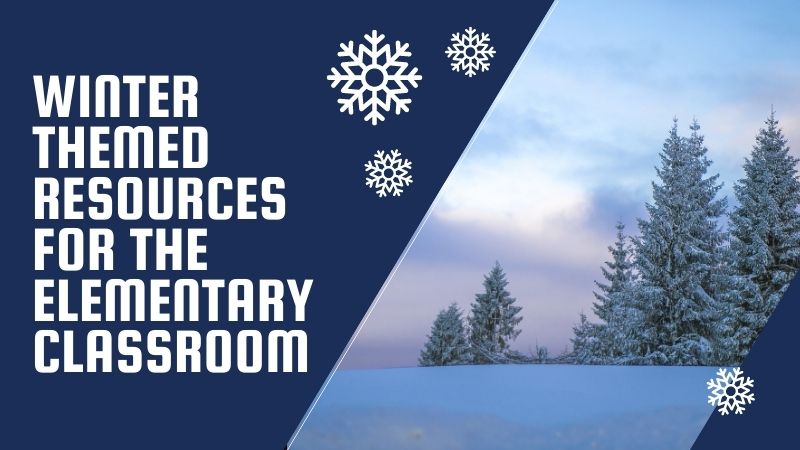
No matter the size, all words have power. How we teach vocabulary matters. Sometimes, we carefully choose our words to say or write something in a very specific way. Other times, we are playful with our language to get a good laugh. We can be brief and just get to the point, but at all times, our words carry meaning. Teaching students new words to use is so, so important. Vocabulary instruction helps our students access more difficult texts, improve their writing craft, and speak in a more sophisticated way. In today’s post, I’ll be reviewing word selection, research points, and recommended activities.
What Vocabulary Words Do We Teach?
To begin, it’s important to know what words to teach and why. Beck and McKeown (Bringing Words to Life) recommend Tier 2 words. Here’s how they’re defined:
- Tier 1 words are words we learn through everyday conversation and may even be sightwords.
- Tier 3 words are specific words that are seldom used. They are difficult and are often times themed or content words.
So what are Tier 2 words?
- They are the words that are just beyond your students.
- They add color to writing at your students’ stage and are words your students may need assistance in decoding.
- I think of Tier 2 words as the “wow” words we want our students to know because they are high utility words.
Instead of walk (a Tier 1 word), you might teach trudged, galloped, meandered, or scurried (Tier 2 words). Eventually, tier 2 words become tier 1 words when students know them well.
Why is Vocabulary Instruction Important?

What is the BEST way to Teach Vocabulary
You know what words to teach and why. Now, let’s look at how you teach them. Here’s what Bringing Words to Life suggests:
Children need 12-15 exposures through active discussion for a word to become part of the child’s speaking/writing vocabulary.
Introducing Your Words
The key point in this quote is “active discussion”. We do this by repeatedly talking about and using the words. We begin by explicitly teaching the words.
- Introduce them by directly teaching the meaning.
- Use active discussion with examples and non-examples
- Put them in context, illustrate them, and practice using them in meaningful ways. If you like, you could use {this freebie} for talking points. I typically explain words and then, we discuss as a group examples and non-examples.
- Many teachers make foldables or use column notes for vocabulary introduction, and these are all great ideas.
After words have been introduced, you might challenge your students to discuss your reading for the day using the vocabulary words from the selected reading. See how many times they can use a vocabulary word in their discussion (tally mark)…winner gets prize (or not). As you teach, weave the words into the discussion and have kids keep tallies on how many words you used for the day (including during math, science and social studies).
vocabulary Practice Activities
In addition to directly teaching vocabulary for your reading material, you might post “Wow” words on a “Wow Word Board” and have students share words they learn in their reading (this will help struggling readers). You should also use challenging words in your discussion with students and follow the words with context. Keep these words on notecards or on rings for spontaneous games at transition times. At line up times, you might try playing games like “Odd One Out” where you list words from a category with one odd word that doesn’t fit that the students have to figure out. You might enjoy using Word Ladders (my adaptation from Rasinski’s idea). This vocabulary building freebie I have in my store is a powerpoint game where you give a description of the word and students try to figure out the “mystery word” and move the shoe up the ladder to reveal a trophy. (Teachers must change the describing sentences to match the words they’re teaching).

You might also try Bunko My Word, another freebie from my store, in your guided reading times after the words have been introduced. This game works well in a table pocket chart. Students roll a dice and select the card that goes with their number. They might give synonyms, antonyms, or use the word in a sentence. (the cards tell what they must do).

Final Thoughts on vocabulary
As you can see, teaching vocabulary to your students needs to be more than a one time introduction. In order for vocabulary instruction to be effective, repetition and careful word selection are key. This vocabulary bundle has a wide variety of options to choose from.
-
Sale Product on saleVocabulary Activities for ANY Word List Lessons Context Clues in Digital and PDF
$14.99Original price was: $14.99.$9.95Current price is: $9.95.
Related Posts You Might Like:
- 20+ Ways to Keep Vocabulary Fresh and Fun
- Why “Covering” Vocabulary Fails to Get the Job Done and What to Do Instead
- 10 Ways to Embed Vocabulary Instruction into Every Lesson
If you find your routine gets stagnant, talk to colleagues for new ways to present vocabulary. However, whatever you do, please do not have students look up words from a dictionary. That’s one of the least effective practices according to Beck and McKeown. In fact, if you need new ideas, be sure to pick up their book. It’s been updated for even better suggestions. If you have fun ways that have worked for your students, feel free to reply with your comments. We all learn from each other, and I can’t wait to see what you do in your classes. I hope you’ll take a moment to share.
Happy Reading!























